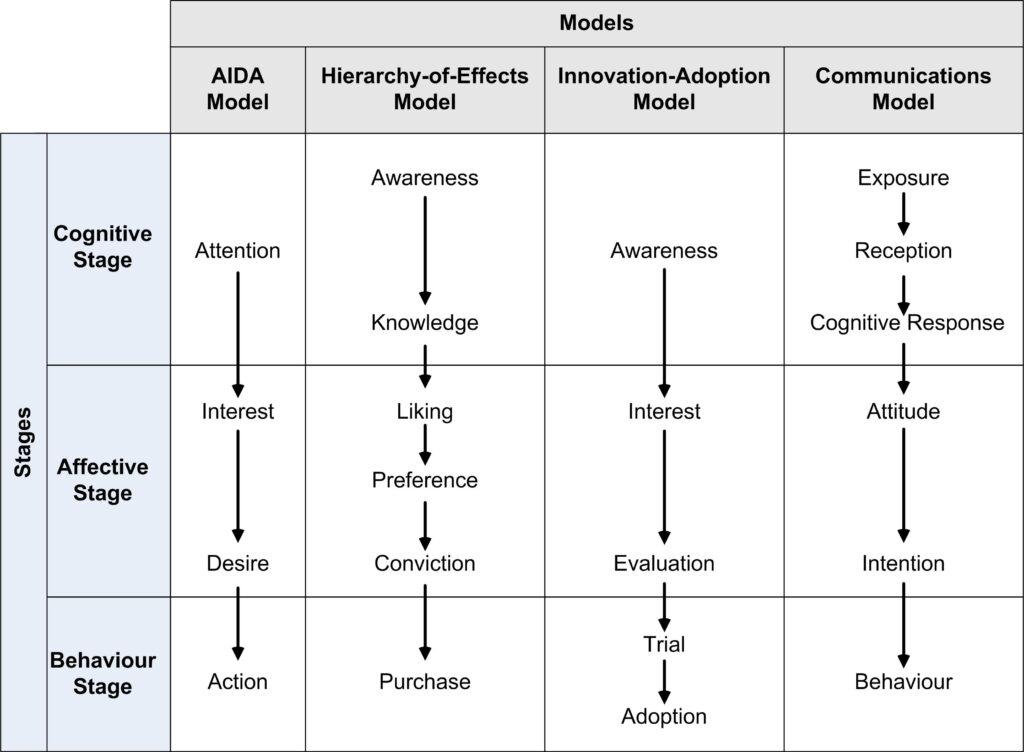Consumers of products[1] typically progress through a number of stages regarding their purchase or non-purchase of products. Or so economists and others interested in modelling such things would like to think.
Creating a model of consumer behaviours or responses is useful to help understand the journey that consumers undertake to possibly become customers. With a model, we can develop a common frame of reference, a common terminology, a common understanding, and perhaps we can even have meaningful discussions.
A number of models, known as hierarchy of effects models have been developed. The models suggest that consumers move through a series of steps or stages when making purchase decisions.
The diagram below presents some of the better-known models. For more details, please refer to the post Customer Response Hierarchy.

Adapted from: Fig. 19.2, Marketing Management 15e, Philip Kotler, Kevin Lane Keller.
[1] In this post, product is the generic term for “the result of an action or process.” en.OxfordDictionaries.com. This is as opposed to the preferred practice at DTC of using the collective term solutions.
